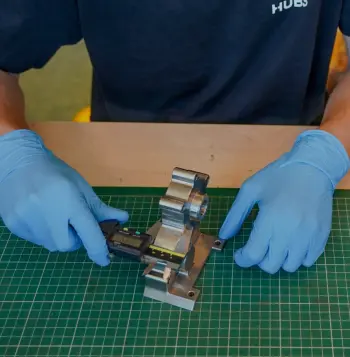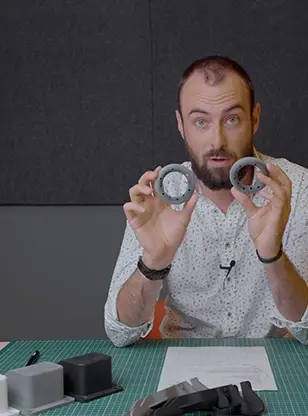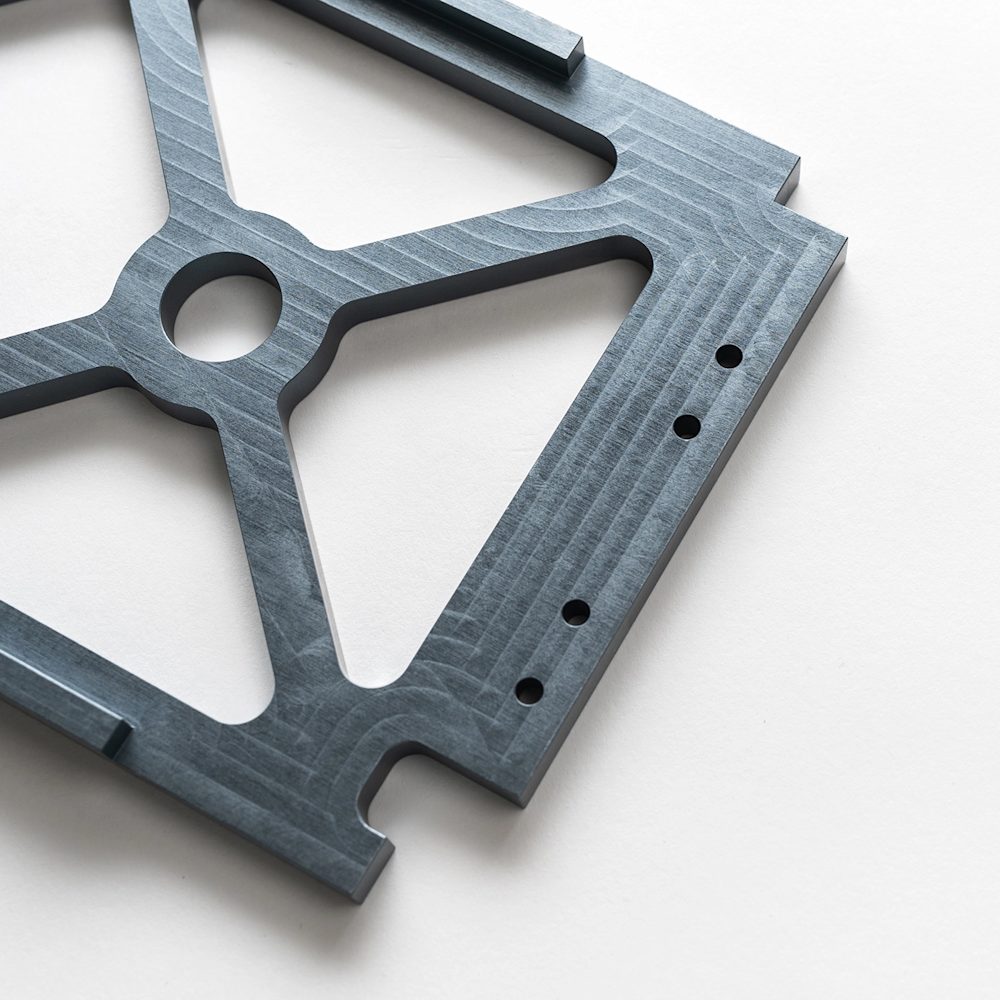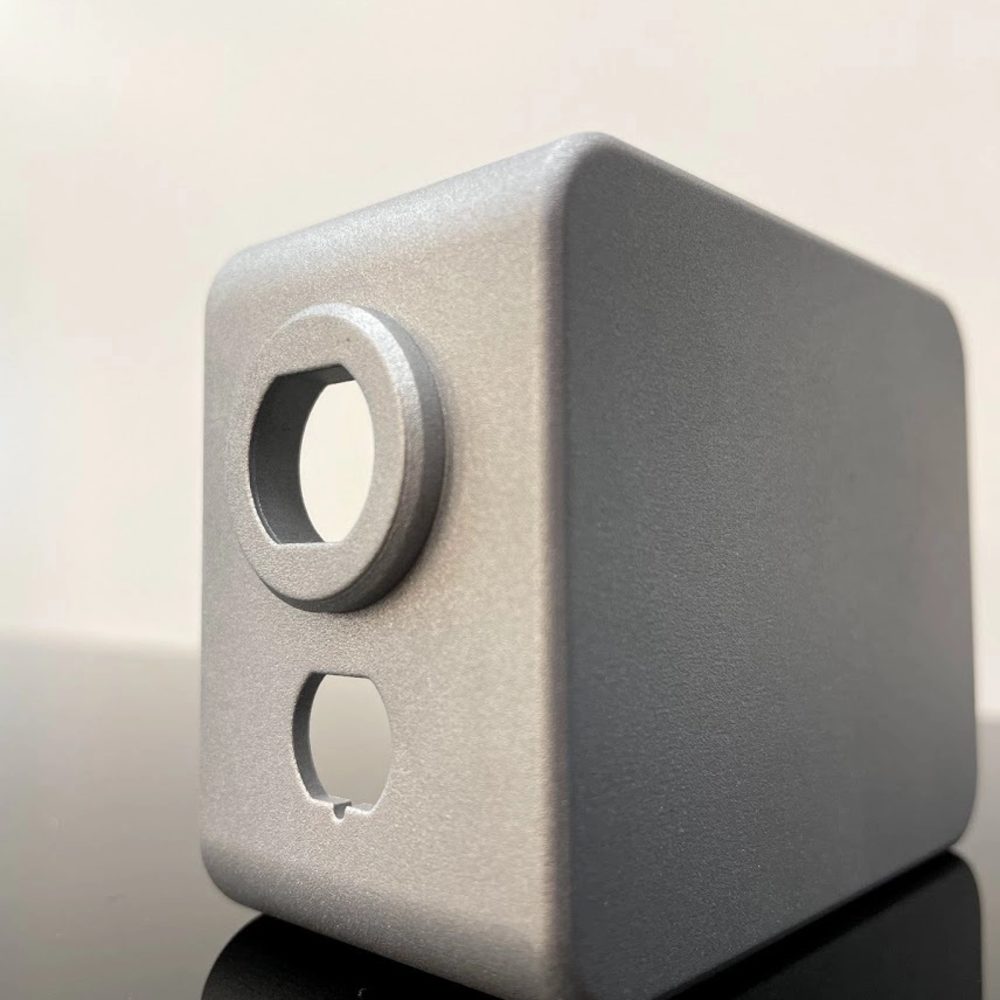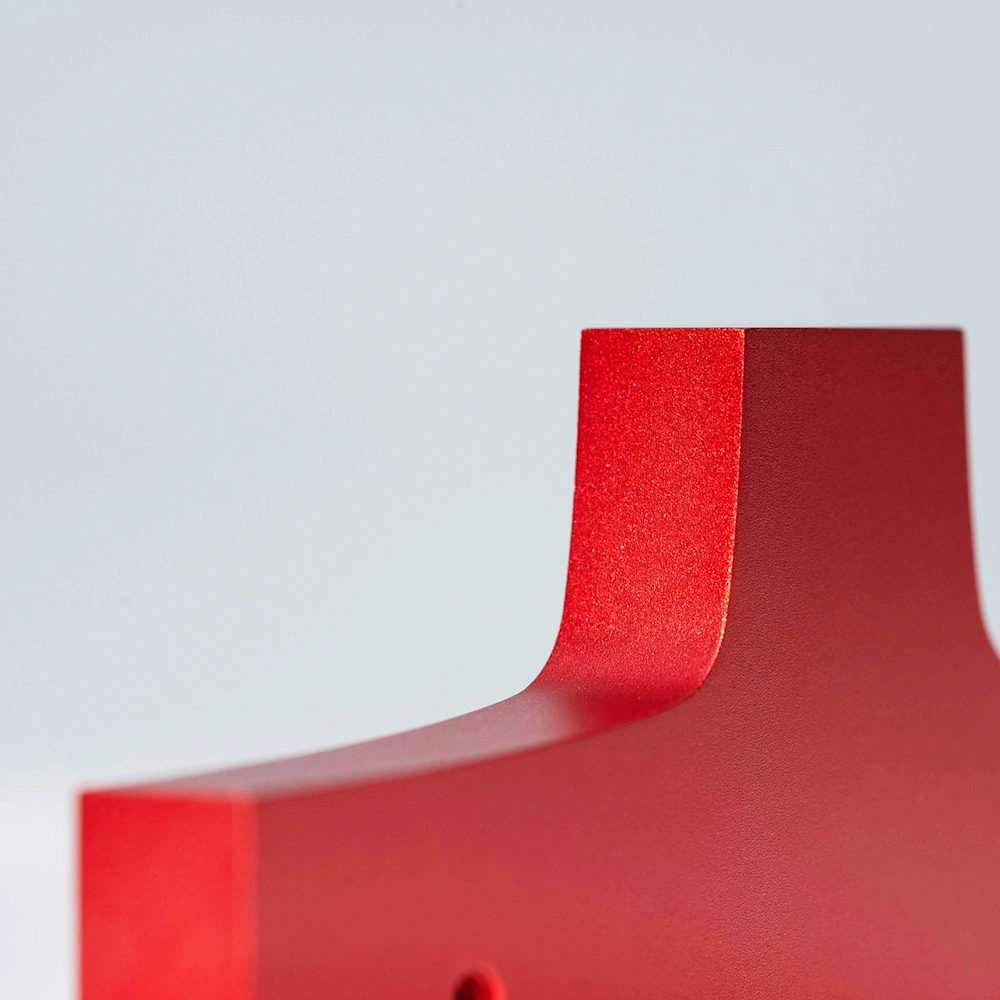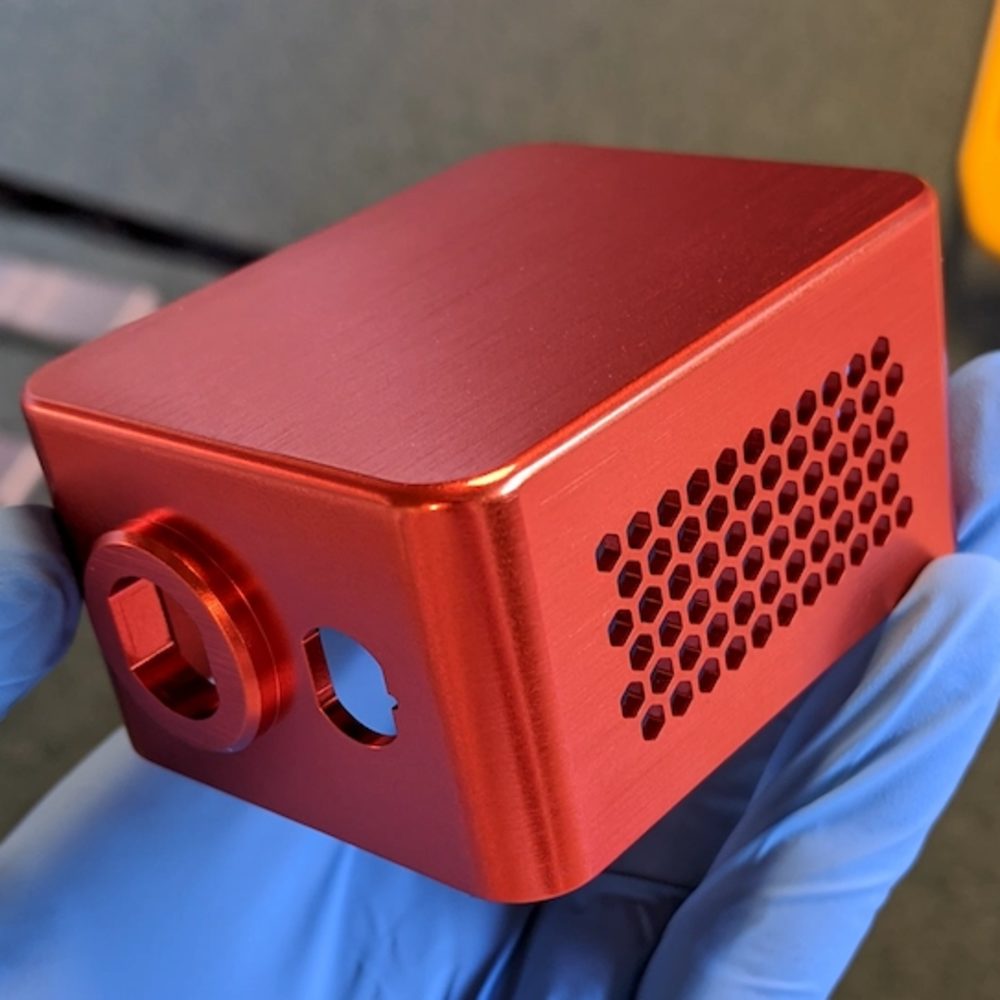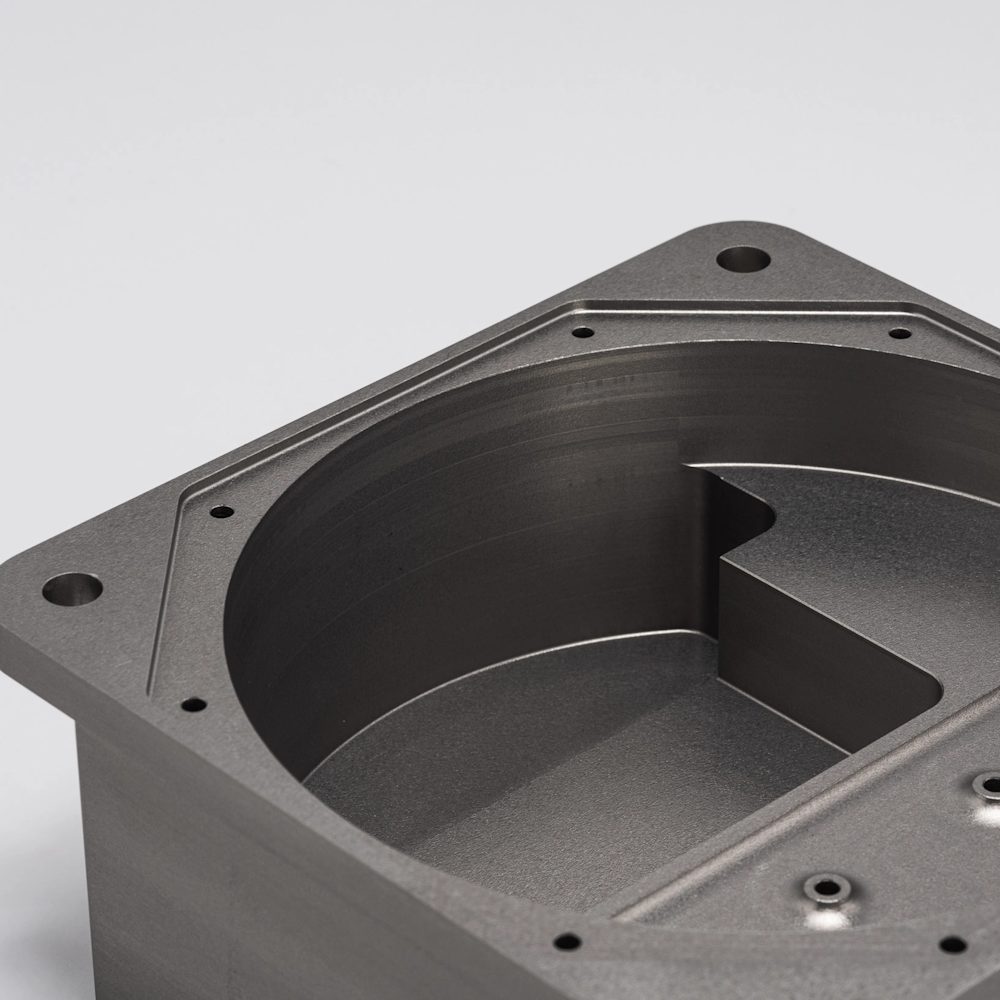Surface finishes
Services d’anodisation aluminium
Nous proposons l’anodisation de type II et III, qui sont des finitions de surface idéales pour les pièces en aluminium. L’anodisation renforce les pièces en aluminium et est disponible en plusieurs couleurs, selon le type. Tous les types d’anodisation augmentent le délai d’exécution et le coût par pièce.
Anodisation type II
| Préparation de la surface | Couleurs | Brillance | Disponibilité cosmétique | Épaisseur** | Aspect visuel |
|---|---|---|---|---|---|
| Tel qu’usiné (Ra 3.2 μm / Ra 126 μin) | Transparent, noir, rouge, bleu, orange, or | Brillant (au-dessus de 20 GU) | Non | pour transparent : 8 à 12 μm (0.00762 mm à 0.01016 mm) noir et couleur : 12 à 16 μm (0.01016 m à 0.01524 mm) | Les pièces sont anodisées directement après l’usinage. Les marques d’usinage seront visibles. |
| Grenaillage | Transparent, noir, rouge, bleu, orange, or | Mat (moins de 10 GU) | Cosmétique sur demande | pour transparent : 8 à 12 μm (0.00762 mm à 0.01016 mm) noir et couleur : 12 à 16 μm (0.01016 m à 0.01524 mm) | Texture granuleuse, finition mate |
| Décapage à la bille | Transparent, noir, rouge, bleu, orange, or | Brillant (supérieur à 20 GU) | Cosmétique sur demande | pour transparent : 8 à 12 μm (0.00762 mm à 0.01016 mm) noir et couleur : 12 à 16 μm (0.01016 m à 0.01524 mm) | Texture granuleuse, finition brillante |
| Brossage (Ra 1.2 μm / Ra 47 μin) | Transparent, noir, rouge, bleu, orange, or | Brillant (au-dessus de 20 GU) | Cosmétique sur demande | pour transparent : 8 à 12 μm (0.00762 mm à 0.01016 mm) noir et couleur : 12 à 16 μm (0.01016 m à 0.01524 mm) | Les pièces sont brossées manuellement pour réduire les marques, puis anodisées. Les lignes de brossage seront visibles. |
Anodisation type III
| Préparation de la surface | Couleurs | Disponibilité cosmétique | Épaisseur | Aspect visuel |
|---|---|---|---|---|
| Surface usinée (Ra 3.2 μm/Ra 126 μin) | Noir, Naturel (les couches plus épaisses apparaîtront plus foncées) | Non | 35 à 50 μm (0,033 mm à 0,050 mm) | Les pièces sont anodisées directement après l’usinage. Les marques d’usinage sont visibles. Les pièces sont anodisées directement après l’usinage. |
| Billes de verre #120 | Noir, Naturel (les couches plus épaisses paraîtront plus foncées) | Cosmétique sur demande | 35 à 50 μm (0,033 mm à 0,050 mm) | Peut être légèrement visible si les pièces sont non cosmétiques et complètement enlevé si les pièces sont cosmétiques. |
* Nous fournissons une gamme de couleurs standard (voir Options de couleurs). Si vous avez besoin d’un code couleur RAL ou Pantone particulier, veuillez contacter networksales@protolabs.com.
**En règle générale, l’épaisseur de l’anodisation est conforme à la norme ISO 7599 : classe ISO AA10 (pour le transparent) et classe ISO AA15. Si vos pièces requièrent des normes différentes, veuillez contacter networksales@protolabs.com.
Options de couleur pour l’anodisation de l’aluminium
L’anodisation peut présenter une certaine variation de couleur en raison des variations de tolérance de l’alliage standard. Consultez le schéma de couleurs ci-dessous pour voir la gamme de couleurs.






Options de couleurs pour l’anodisation de l’aluminium type III


Exemple de pièce anodisée

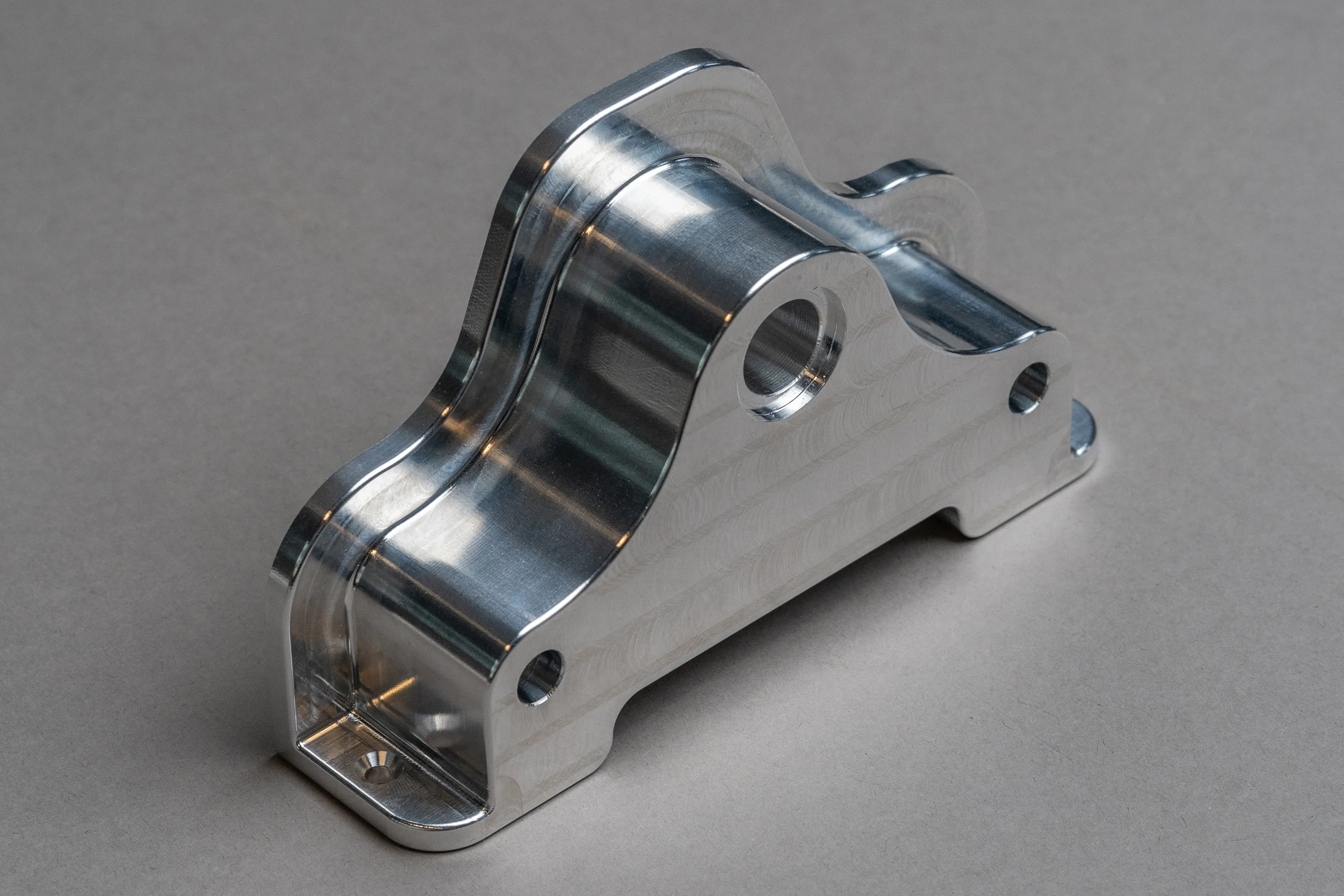
Galerie de pièces anodisées
Considérations de conception pour l’anodisation de l’aluminium
- L’anodisation consiste à suspendre les pièces à l’aide d’un gabarit ou d’une crémaillère. Cela laisse des marques sur votre pièce là où l’anodisation n’était pas possible. Pour en savoir plus, consultez notre page consacrée à la finition des surfaces
- L’anodisation isole vos pièces, réduisant leur conductivité.
- Le masquage n’est pas nécessaire par défaut, car l’anodisation n’augmente pas l’épaisseur de votre pièce de manière significative. N’oubliez pas d’indiquer dans votre fichier CAO si vous souhaitez que des zones spécifiques de la pièce soient masquées ou obturées.
- L’anodisation de type III, en revanche, augmente considérablement l’épaisseur de la surface de votre pièce. Nous recommandons de boucher et de masquer les trous filetés/rêvés ou d’autres surfaces critiques pour le fonctionnement.
Notre processus d’anodisation
L’anodisation est un procédé électrolytique qui permet de protéger les pièces en aluminium contre l’usure et la corrosion et d’en améliorer l’aspect esthétique. Décrivons les étapes de base de l’anodisation d’une pièce :
-
Connecter la pièce à l’anode
-
Plonger la pièce dans une solution électrolytique acide.
-
Appliquer une cathode à une électrode métallique dans la solution.
-
Les ions positifs réagissent avec les ions O2 négatifs et la surface devient poreuse.
-
Une couche d’oxyde d’aluminium se forme alors sur la pièce.
-
Utiliser des inhibiteurs de corrosion ou des colorants à des fins cosmétiques.
-
Sceller les nanopores

Ressources vidéo sur l’anodisation de l’aluminium


Envoyez vos pièces anodisées en production dès aujourd’hui
Obtenir un devis instantané